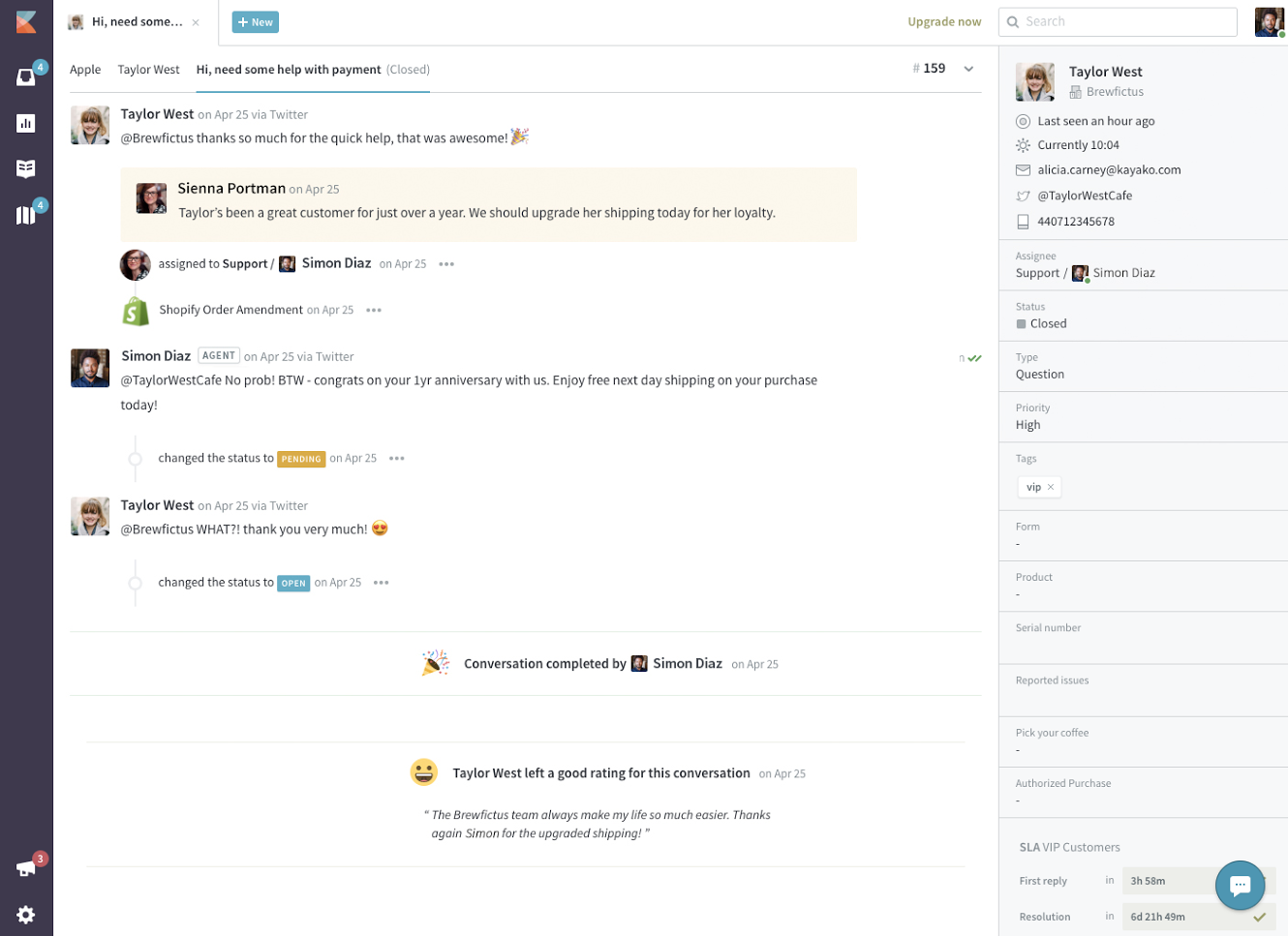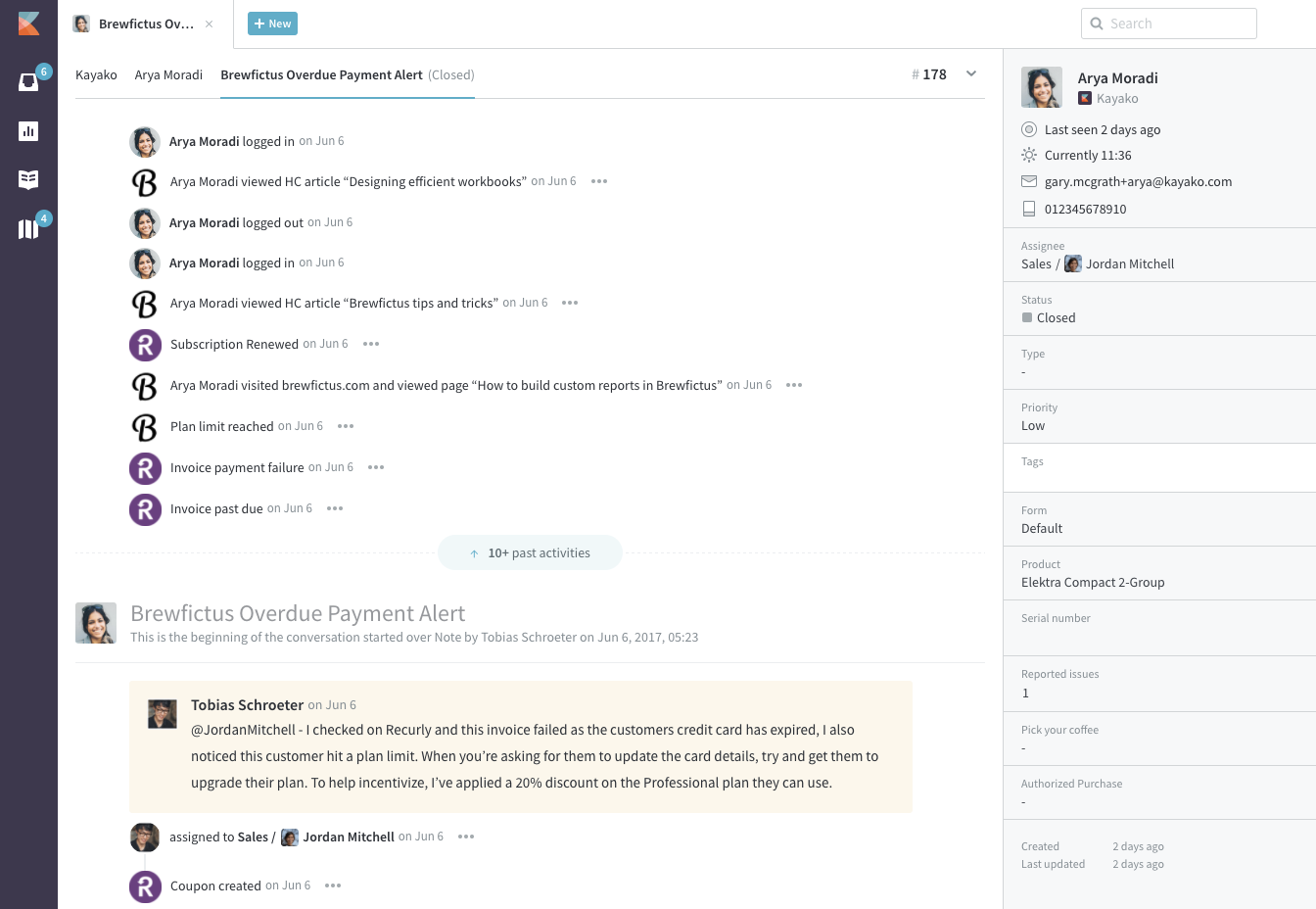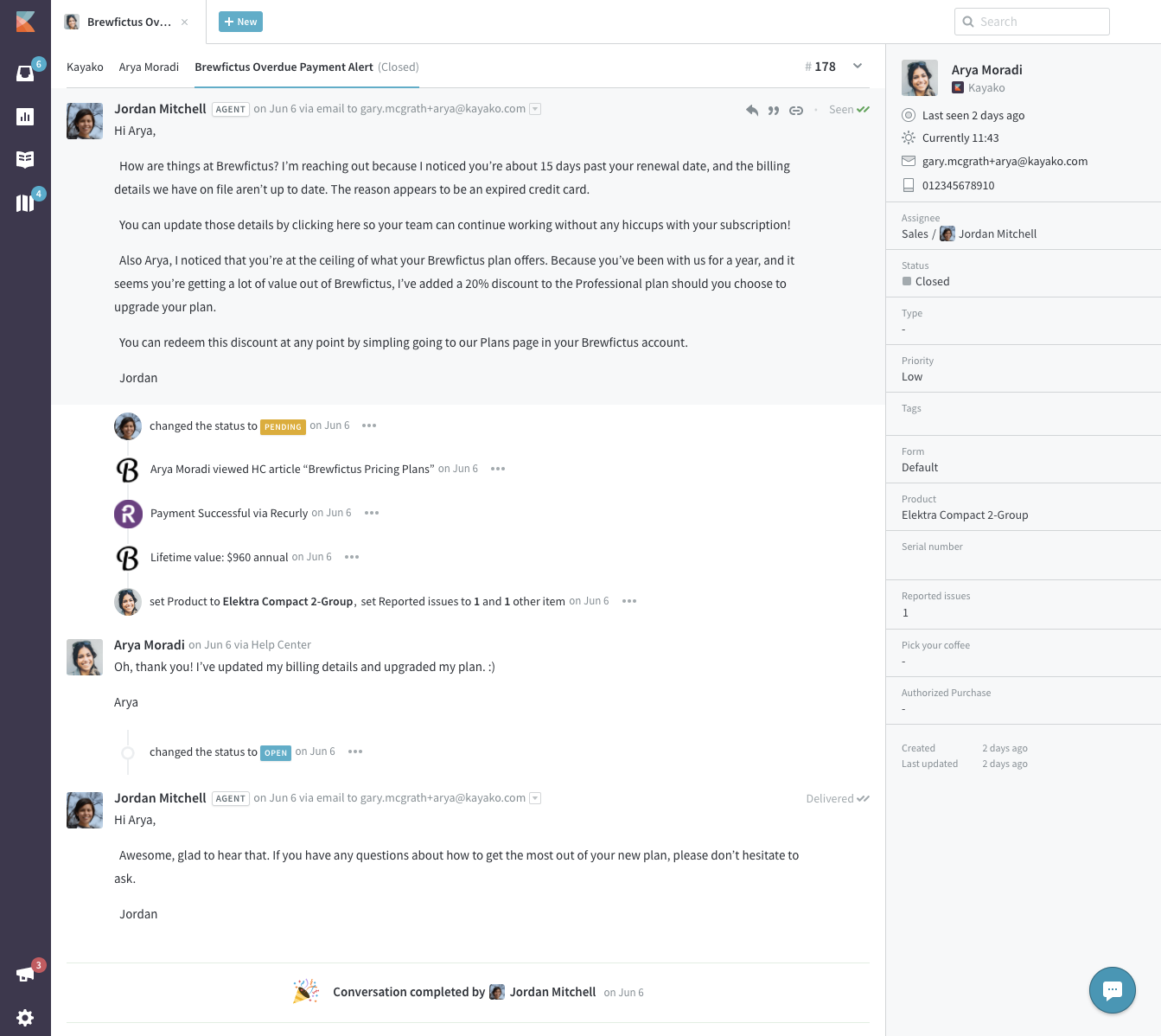Last month I switched gyms. I didn’t have a major issue with the old one. The monthly cost was pretty average and I visited regularly, but I didn’t feel particularly valued. No one really checked in with me after my induction and their communication style was really impersonal.
At the new place, I already feel part of a community. The staff start friendly conversations with me. They seem genuinely supportive of my goals. To me, that’s valuable.
All companies should act like my new gym…but it’s particularly important in the world of SaaS. With subscription models ruling the waves in SaaS, our customers are only ever a few clicks away from joining competitors.
Ultimately though, just realizing that loyalty is key to your long-term success isn’t enough. You need to understand how customer allegiance is inspired, and ensure it’s embedded in every part of your business.
The key to all this?
Improve customer intimacy
Intimacy seems like a weird word to use in relation to your customers, right?
Well, yeah, ‘intimate’ is certainly more common to discussions of family, friends and partners …or even cupboard-sized bedrooms, if you’re buying real estate. But intimacy has a surprising role in business too.
Customer intimacy means moving beyond a transactional relationship, to really understand what problems your customers are trying to solve.
The concept originates from the late 80s, but the idea never really went away – I think, in time, successful companies have just internalized the principle.
Customer intimacy is about respecting your customer’s value to the company in the long term, not the value of a single transaction.
Again, be more like my new gym and less like my old one.
In the 80s and 90s, companies like IBM and Home Depot established themselves as trailblazers by recognizing this fact. Employees in these companies do almost anything to make sure that each customer gets exactly what they want, with little regard for initial cost to the company.
Home Depot clerks spend whatever time is required to help a customer figure out which product will solve their home-repair problem. The clerks have one priority: make sure the customer gets the right product, whether it retails for $59 or 59 cents.
Home Depot’s business strategy is built around the customer’s need for information, not just products.
Today, we see this same customer intimacy approach from Amazon
Amazon succeeds because Jeff Bezos understands that every aspect of the customer lifecycle and every milestone of the customer journey is just as important as the rest.
Being big isn’t the reason these companies are able to put customers first; putting customers first is what made them big. Customer intimacy works and it works for organizations of any size.
Now, in 2017, when building and maintaining a loyal customer base is so challenging, customer intimacy may well be the biggest factor in your company’s long-term success (presuming you have a good product in the first place).
Remember, loyalty isn’t about more customers, it’s about lower churn.
Feel the churn
Understating the importance of subscriber retention is hard to do, but the topic sometimes confuses people. Let’s straighten out some facts about churn.
According to the broadest surveys of the SaaS space, 5-7% annual churn is a respectable figure. Per month, that works out at 0.42-0.58%, meaning you’d lose about 1 out of every 200 customers per month.
That’s a solid platform for a high-growth company. Unfortunately, only fully mature SaaS companies tend to hit those rates.
A lot of startups are reporting a 5% monthly churn or worse. That’s a huge difference and, to be clear, 5% churn per month is not a comfortable place to be.
For starters, that 5% is compounded each month. By year end, that rate becomes ~46% churn. If you start the year with 100 customers, you’d have to acquire 47 by the end of the year just to have grown by 1 customer!
A 5% monthly churn rate makes SaaS life pretty difficult.
To stop churn, you need to understand why it happens. This might vary wildly from sector to sector, but you can boil it down to two fundamentals:
1. Something happened with the customer
If my original gym had asked me if I felt valued, I’d have let them know honestly. I’m not going to make that effort without a prompt though. The better option is to intimately understand what’s most important to your customers, so if something does go wrong in that area of your service, you’re aware it’s a big deal to them.
2. The customer did not achieve their desired outcome
Let’s get two things straight on this front:
- Your customers don’t sign-up because they’re keen to use your service, they sign-up keen to achieve a specific outcome – they’re hoping your service or product is the tool they need to do that.
- In the world of SaaS, you don’t win by getting there first or having the best idea; you win by continually solving your customers’ problems better.
In both instances, maintaining closer ties with your customers helps build loyalty and reduces churn. Within the context of support, one key principle lies at the heart of achieving customer intimacy: the strategy.
What is a customer intimacy strategy?
Some companies, such as Big Cartel, have tried ‘all-hands support’ to get closer to customer needs. The idea is that engineers and other non-support staff directly answer questions. This means faster answers on the first try, rather than back-and-forth between the support agent and the engineer.
On paper, it’s a good idea, but in practice it doesn’t work out so well.
In Big Cartel’s case, customer satisfaction scores took a big hit. Why? Because people in other parts of the business underestimated the level of communication skills, empathy, sense of humor and patience required by top quality customer support staff.
The solution, it turns out isn’t all-hands support for customers…it’s all hands support for your support staff.
Putting support front and center
We know that loyal customers drive profits. We also know that support teams are usually the only people interacting with them post-purchase. There should be no debate that support roles should be respected as a profit-center in your company.
Other teams should understand that information from support – from customer feedback, to bug reports and product requests – helps engineers, developers and managers to improve your product. Equally, collaboration with all other departments means customers receive more efficient and accurate answers to their questions. Support staff shouldn’t be stuck as go-betweens between customers and engineers.
At Kayako, we spend a lot of time thinking about how this collaboration works best.
With the collaborators function, we’ve cracked a big problem.
Now, if your support worker wants help from an engineer, they can add them as a collaborator, giving the engineer total visibility over the journey to date and allowing them to pass on valuable information efficiently without your support worker needing to switch between multiple conversations.

Collaborators like Sienna can leave internal notes, work on conversations, and draft help centre articles, while the support staff handle the conversation with your customer.
On its own, the collaborators tool allows consistently excellent support. In combination with our journeys and conversations tool, your team will reach whole new levels.
Check out Taylor’s experience here:

That customer love, that’s the goal.
Interactions such as this, where you’ve understood your customer and anticipated an opportunity to invest in her loyalty, that’s the value of customer intimacy. Without the right tools at hand, this intimacy isn’t easy to achieve.
Tailored for every journey
If you work in a support environment where unglamorous issues like payment errors take up most of your time, you might think customer intimacy is a far-off pipe dream, but there are opportunities.
Among other frustrations, dealing with payment issues using traditional help desk software can be clunky – you often have to open up a few different apps to understand why payment might have failed.
Our journeys and conversations feature makes life simple.
No jumping from app to app; your agents can see everything on one screen, including a timeline of recent customer activities. As a support agent, you can leave a note for the sales team to add more context for a personalized reply.

Thanks to our in-built tools, our support agent Tobias identified what was wrong without leaving Kayako. All the relevant information is right there for him to pass over to Brewfictus sales agent Jordan Mitchell.

In turn, Jordan is able to reach out and proactively suggest the solution to the customer. Knowing Arya’s customer history is key to the interaction; without that intimate customer knowledge, Tobias wouldn’t spot a perfect opportunity for Jordan to delight Arya with a 20% discount for upgrading her plan.
Arya feels valued, Brewfictus has a loyal customer.
This is the support journey as it’s meant to be!
The impact of achieving this level of customer intimacy is backed by the stats. According to CX solutions, customers are 32% more likely to reward businesses with repurchases if they provide proactive support and help get more out of the product.
Just imagine the impact to your business when your entire staff is able to get closer to your customers.
Remove the distance between your team and customers with Kayako Collaborators. Try Kayako’s Collaborators on a free 14-day trial and start your journey to better collaboration today!

